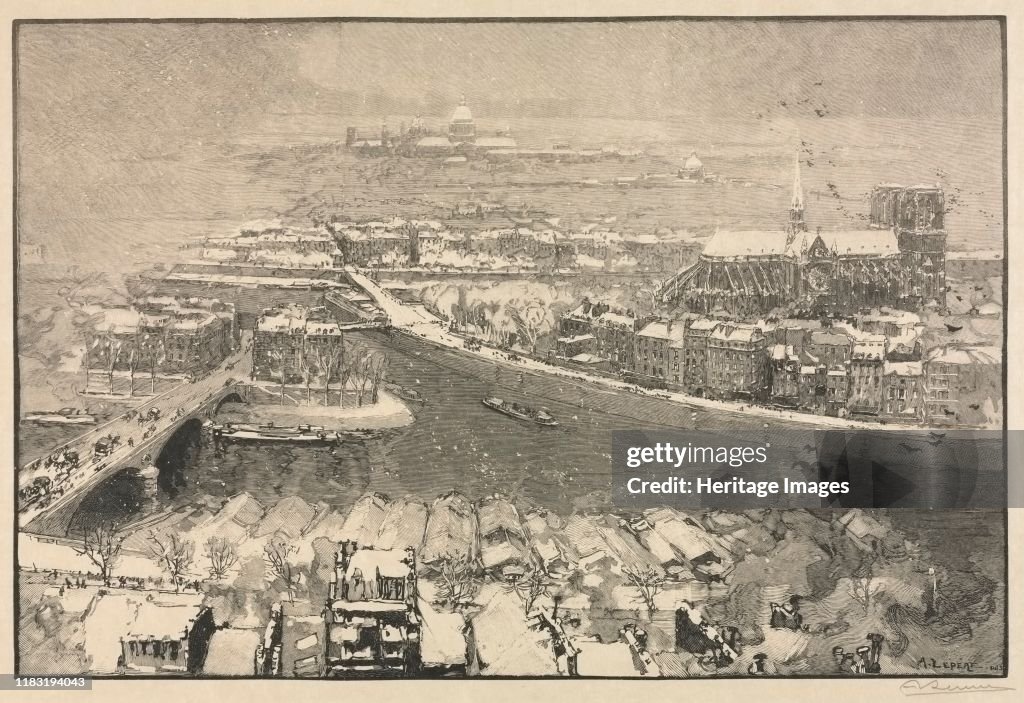Paris Under Snow
Paris under Snow, 1890. Wood engraving was perfected about 1770 in England by Thomas Bewick (1753-1828). Since the end grain of a hard wood is used, the block can be engraved with a sharp instrument called a burin, making closely set lines possible and producing a great range of textures and tones. The surface of the block is inked and printed so that the engraved lines appear as white areas. The strength of the block meant that numerous impressions could be printed. Wood engraving thus became a principal method for illustrating books and newspapers in the 19th century. Lepère developed an extraordinary mastery of wood engraving, which he used to effectively describe a snowy view of central Paris. The confetti-like snowflakes silhouetted against the dark river, and the overall blurring effect caused by the snowfall in the distance, are a tour de force. Creator Maxime Lalanne (French, 1827-1886). (Photo by Heritage Arts/Heritage Images via Getty Images)

PURCHASE A LICENSE
How can I use this image?
€300.00
EUR
Getty ImagesParis Under Snow, News Photo Paris Under Snow Get premium, high resolution news photos at Getty ImagesProduct #:1183194043
Paris Under Snow Get premium, high resolution news photos at Getty ImagesProduct #:1183194043
 Paris Under Snow Get premium, high resolution news photos at Getty ImagesProduct #:1183194043
Paris Under Snow Get premium, high resolution news photos at Getty ImagesProduct #:1183194043€475€115
Getty Images
In stockPlease note: images depicting historical events may contain themes, or have descriptions, that do not reflect current understanding. They are provided in a historical context. .
DETAILS
Restrictions:
Contact your local office for all commercial or promotional uses.
Credit:
Editorial #:
1183194043
Collection:
Hulton Archive
Date created:
January 01, 1890
Upload date:
License type:
Release info:
Not released.��More information
Source:
Hulton Archive
Object name:
2737385.jpg
Max file size:
5229 x 3588 px (17.43 x 11.96 in) - 300 dpi - 13 MB